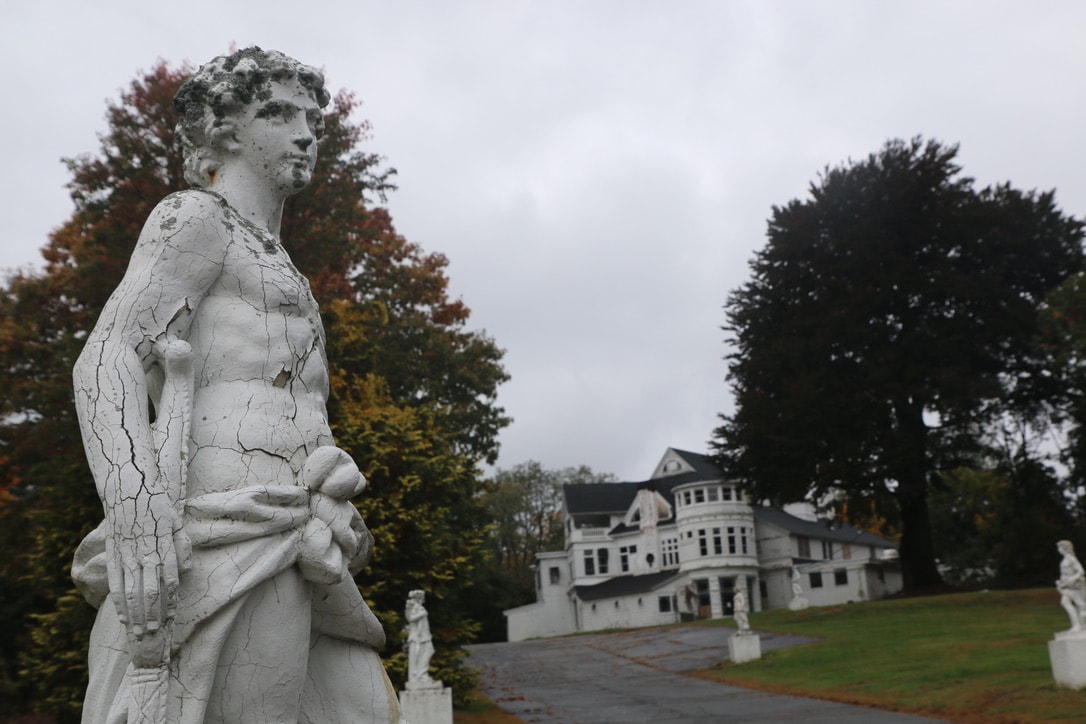
NORTHBOROUGH – American Rescue Plan Act (ARPA) funds have been released to go toward an environmental mitigation study for White Cliffs.
The Select Board voted 4-0 to release $13,000 in ARPA funds during their July 17 meeting. Select Board member Lisa Maselli recused herself.
“I think it’s work that’s going to need to be done prior to any substantive work on White Cliffs,” said Interim Town Administrator Bob Reed.
He said it would be important to know what the cost of mitigation would be “so people will know just what the rehabilitation of White Cliffs will cost.”
The study would help the Select Board and residents have a baseline understanding of those costs, he added.
Facility Manager Shawn Thompson and Department of Public Works Director Scott Charpentier discussed such an evaluation during a Select Board meeting in mid-June. At that time, Thompson told the board that a mold analysis indicated that there were heavy concentrations on the first floor.
When the mold analysis was conducted, Thompson had asked a representative from a nationwide mold remediation company what the town was looking at in terms of mold remediation. That representative estimated that it would cost between $1 to $2 million to remediate the mold, though Thompson cautioned that that was an off-the-cuff estimate.
After that meeting, there have been subsequent conversations as to whether the Community Preservation Committee (CPC) could fund this out of their administrative fund.
Select Board Chair Mitch Cohen discussed this possibility with Planning Director Laurie Connors and CPC Chair John Campbell. According to Cohen, Campbell did research with the state and reported that this type of studies were not eligible to be funded directly by the CPC.
“[It’s] not close enough to a current plan,” Cohen said. “It would be something like an appraisal on a property that the town was thinking about buying, for example, might be fundable. But something like this, even though there have been some past uses of CPC funds similar — turns out, that’s not appropriate.”
Cohen said he told Campbell that the Select Board would consider funding the study with ARPA funds. The town is expected to receive a total of approximately $4.5 million in ARPA funds.
According to Capital Environmental’s budget attached in the Select Board’s packet, the study would develop scopes of work and a remediation budget to manage lead paint, asbestos, lead in the soil and mold.
In the proposal, Capital Environmental said an onsite meeting or meetings would be needed with the town “to discuss the proposed scope and extent of the renovation plans for the building and proposed future usage.”
It continued, “This will help determine the scale of abatement services required for the tasks listed in this document and which renovation trade will be impacted and may be able to include these tasks in their routine scope of services.”
White Cliffs additions
During the board meeting, there was discussion about the demolition of the additions, including their potential timeline and cost.
Reed said the board wouldn’t receive quotes to demolish the additions from this study, but the town could move forward to get estimates.
The question, Cohen said, is what the mansion would be sealed with after the additions were removed.
“Because we bought [White Cliffs] with CPC money with the historic designation, we have to, by the time we’re done with it, turn it back into something resembling the initial exterior and interior appearance of that,” he said.
That hasn’t been identified nor has a use or whether additions would be needed, Cohen said.
“It becomes a little gray to find out that in-between part,” Cohen said.
He said the town should find the answers “even if that means sealing it up with plywood with the permanent details to be sorted out later.”
“Getting rid of those additions is something anybody who uses that building will need to do, particularly if we can get some grant money or CPC money to move forward with that, that would be helpful,” Cohen said.
RELATED CONTENT
Select Board discusses White Cliffs remediation evaluation

















